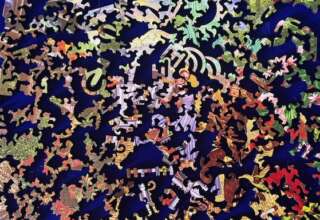
This is identified as a social network challenge because it is not easy to get all people to embrace NPI. This is where the second and third challenges that I have identified come to the fore. Powerfully influential, large and abundant social networks can be found in some societies (that I will identify as “enmeshed” societies and cultures) but are much smaller in size and number and much less influential in other societies and cultures (that I will identify as “disengaged” societies and cultures).
When the society or culture is disengaged (such as is the case in the United States), then a small number of social networks can make all the difference regarding spread of the virus. Christakis puts it this way:
In many real-world social networks, most people have very few contacts and a small minority have many connections. This small minority are the ones who often go on to become super-spreaders. So SARS-2 is more likely to reach these well-connected people, and they are more likely to spread it to a large number of people. In fact, mathematical models of a disease spreading over such net works with super-spreaders closely mirror the observed trajectory of real cases of COVID-19. However, just having a large number of contacts, however defined or ascertained, does not mean someone is necessarily a super-spreader. Christakis (2020, p. 56)
How do you discovered these networks and how do you influence what happens in these networks—for they tend to be quite isolated with strong boundaries. They are hard to influence. Social psychologists can play an important role in analyzing these networks—often aided by computer-based simulation tools (such as agent-based modeling).
Individualism: There are important, historical distinction to be drawn between societies and culture that are highly individualistic and those that tip toward collectivism. I have borrowed a term from the field of family psychology to describe the individualistic culture as one of disengagement. Individuals and units (families, organizations, communities) in a disengaged culture tend to operate independently of other individuals and units. There is often little societal “glue” (such as shared traditions, history and rituals) that would bring and hold people together. Robert Sommer (1969) would describe this as a society that is replete with sociofugal settings. These are settings in which people tend to be pulled outward or thrown away from one another.
The disengaged culture in this society, in turn, relates to an ethic of individual rights. In such a society, I am entitled to maximum freedom and are not required to comply with what other people want of me in terms of my behavior or my responsibility for their welfare. In such a society, NPIs are likely to be ignored or even actively resisted, as are inoculations that are either recommended or required: “I don’t need to wear a mask!” “It is my right to stand wherever I want when associating with other people.” “I don’t have to get my arm poked with some needle just because you want me to.” “It is stupid that we are sacrificing our economy just because some people think these restrictions will somehow make a different—I don’t really trust the experts and those who want to control our nation!”









